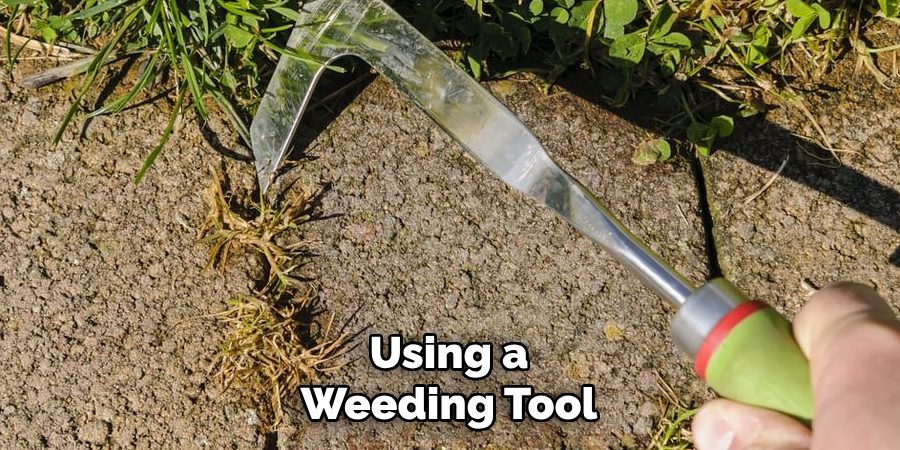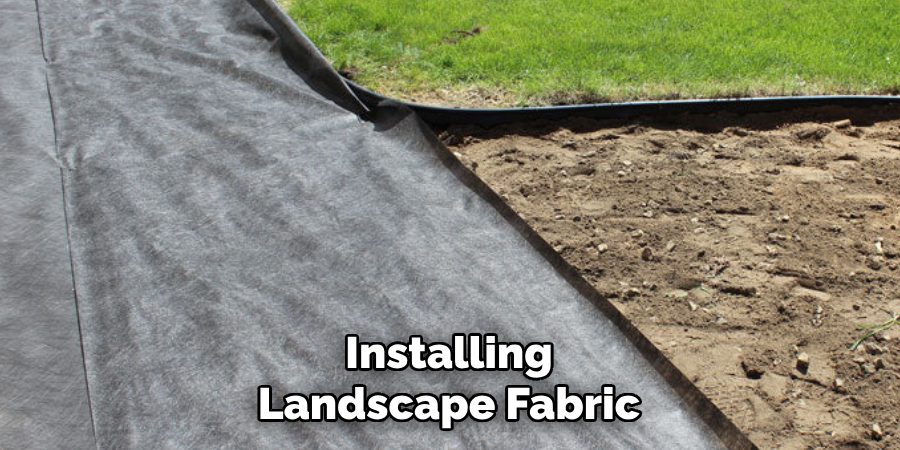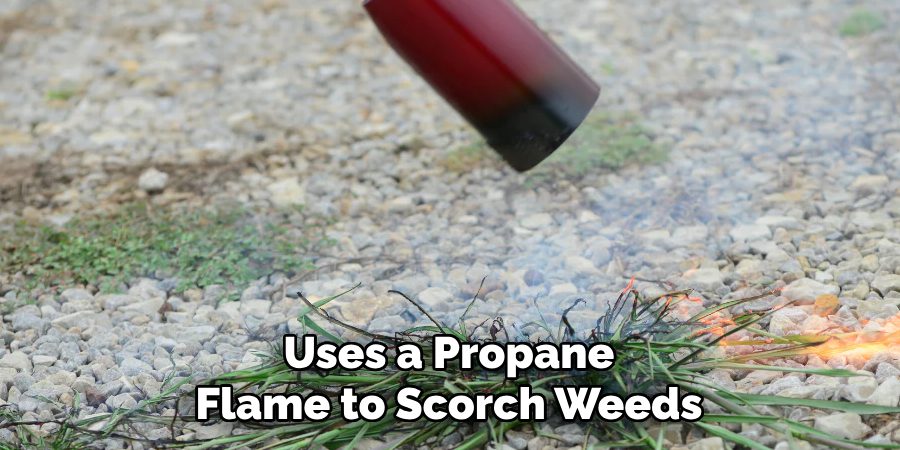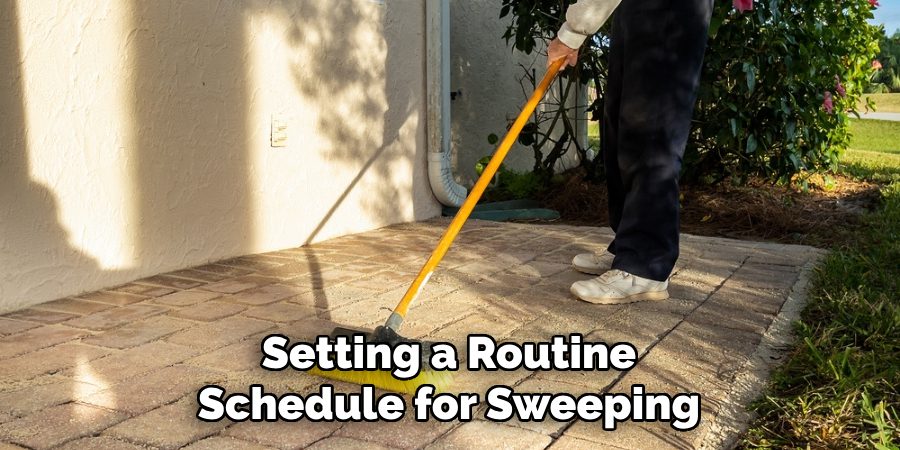Weeds can quickly take over a patio, making it look untidy and unkempt. These persistent plants not only detract from the overall appearance of your outdoor space but can also cause cracks and damage to the hardscape over time.

Luckily, there are effective methods to remove patio weeds and keep them from coming back. This guide explores the key aspects of how to get rid of patio weeds. Whether you prefer natural solutions or more traditional approaches, eliminating weeds doesn’t have to be a daunting task.
The Common Problem of Patio Weeds
Patio weeds are a frequent frustration for homeowners and outdoor enthusiasts alike. These resilient plants often sprout between cracks in pavers, tiles, or concrete, thriving in areas where water and sunlight can reach. Their ability to quickly spread and regenerate makes them particularly troublesome.
Aside from their unsightly appearance, patio weeds can contribute to structural issues by widening cracks and weakening the foundation of the patio over time. Furthermore, neglected weeds can attract pests or encourage mold growth, further diminishing the quality of your outdoor space. Understanding why weeds grow and addressing their root causes is essential for maintaining a clean, weed-free patio.
Common Weeds Found on Patios
Several types of weeds are commonly found invading patios, each with unique characteristics that make them resilient. Dandelions are a frequent culprit, with their deep taproots allowing them to thrive in tight cracks. Crabgrass is another stubborn invader, spreading quickly and taking root in the smallest crevices. Clover, though small and seemingly harmless, can quickly carpet a patio if left unchecked.
Plantain weeds, identifiable by their broad leaves, are also a regular sight on patios, particularly in shaded areas. Additionally, moss and algae, although not technically weeds, often grow on damp patio surfaces, contributing to a slippery and unsightly appearance. Identifying these common weeds is the first step to choosing the most effective method for their removal.
10 Methods How to Get Rid of Patio Weeds
1. Hand Pulling Weeds
The most straightforward and effective way to get rid of weeds is by hand pulling. Although this method may be labor-intensive, especially if the weeds are widespread, it’s a great first step in addressing small patches.

The key to successful hand-pulling is ensuring that you remove the entire weed, including the root, to prevent regrowth. Using a weeding tool or small hand fork can help loosen the soil around the weed, making it easier to pull up the root. This method is ideal for young, shallow-rooted weeds and can be done quickly if tackled regularly.
2. Boiling Water
Boiling water is one of the simplest and most effective natural weed killers. When poured directly onto weeds, the high temperature scalds the plants, killing them instantly. This method works especially well for weeds growing in cracks between patio stones or in potted plants.
To use boiling water, simply heat a kettle or pot of water to a boil, and then pour it directly onto the weeds, being careful not to splash nearby plants you want to keep. This method is particularly effective against annual weeds and smaller, tender weeds but may need to be repeated in a few weeks as new weeds emerge.
3. Vinegar Solutions
Vinegar is a commonly used household item that can serve as a powerful weed killer. The acetic acid in vinegar works to dehydrate the plant, causing it to wither and die. To use vinegar as a weed killer, pour it directly onto the leaves of the weeds, ensuring full coverage.
For even better results, you can mix vinegar with a tablespoon of dish soap, which helps the solution adhere to the leaves. While vinegar is effective for killing weeds, it is non-selective, meaning it will harm any plant it touches, so use it carefully and avoid spraying it on desirable plants.
4. Landscape Fabric or Weed Barriers
A preventive method to stop weeds from growing in the first place is by installing landscape fabric or weed barriers. These materials are designed to block sunlight from reaching weed seeds, effectively preventing germination.

You can lay the fabric under mulch, gravel, or pavers on your patio to create a long-lasting barrier against weeds. This is a particularly effective option for larger patio areas or for spots where weeds have become a recurring issue.
5. Mulching
Mulching is another simple and effective technique to suppress weeds. By applying a thick layer of mulch over garden beds or around pots, you can block sunlight from reaching weed seeds, thereby preventing their growth.
Organic mulches, such as wood chips, straw, or grass clippings, are particularly beneficial because they not only inhibit weed growth but also enrich the soil as they decompose. For patios with open spaces, you can use a combination of mulch and landscape fabric for added protection.
6. Salt Solution
A salt solution is another inexpensive method for killing weeds. Salt draws moisture out of the plant cells, causing them to dry up and die. To create a salt solution, dissolve 1 cup of salt in 2 cups of water, and pour it directly onto the weeds.
While effective, salt can also affect the surrounding soil, making it unsuitable for areas where you plan to plant other vegetation. This method should be used sparingly, especially in patio areas where you want to avoid damaging the soil for future gardening. Salt is best used for smaller, persistent weeds that are difficult to remove by other means.
7. Weed Torch
A weed torch is a specialized tool that uses a propane flame to scorch weeds. The high heat damages the plant cells, causing them to wilt and die within hours or days.

A weed torch is particularly effective for weeds growing in cracks or between pavers, as it can easily target small patches without disturbing the surrounding surface. This method is eco-friendly, as it uses no chemicals, and it’s ideal for patios where you want a quick solution.
8. Herbicides
If natural methods are not yielding results or if you have a more significant weed problem, herbicides can be an effective option. There are both selective and non-selective herbicides available, with selective ones targeting specific weeds without harming desirable plants.
Non-selective herbicides, however, will kill any plant they come into contact with, making them a last resort when dealing with stubborn weeds. When applying herbicides, follow the manufacturer’s instructions closely and apply them on calm days to avoid drift.
9. Newspaper or Cardboard Smothering
A more eco-friendly and cost-effective solution to weed control is smothering them with newspaper or cardboard. This method works by blocking sunlight from reaching the weeds, causing them to suffocate and die.
Simply place several layers of newspaper or cardboard over the weed-infested areas, and then top with mulch, gravel, or pavers to keep the material in place. This technique not only eliminates existing weeds but also prevents new ones from sprouting. It’s especially effective for larger patio spaces and for those looking to maintain a more organic approach to weed control.
10. Regular Maintenance
Regularly inspecting your patio and removing any emerging weeds is one of the most effective ways to keep your outdoor space free of weeds. Once a week or after a rainstorm, walk around your patio to spot any new weed growth and remove them immediately.
Early intervention is key to preventing weeds from taking root and spreading. By staying on top of maintenance, you can prevent weeds from becoming a major problem and reduce the amount of time spent on more intensive weed control methods.
Maintenance and Upkeep
Proper maintenance and upkeep are essential for ensuring your patio remains a clean, weed-free, and inviting space throughout the year.
Start by setting a routine schedule for sweeping and cleaning your patio to remove debris, fallen leaves, and dirt, as these can accumulate and create a breeding ground for weed seeds. Power washing your patio seasonally is another effective way to remove dirt from surfaces and clear out moss or algae that might develop in damp areas.

Regularly inspect the spaces between pavers, cracks, or edges where weeds are most likely to sprout. Reinforce preventative measures, such as adding sand or filler to gaps between pavers, which can deter weed growth while maintaining the tidy appearance of your patio. If you are using mulch or landscape fabric, replenish or repair these layers as needed to ensure their effectiveness over time.
Conclusion
Getting rid of weeds on your patio doesn’t have to be a difficult or expensive task. With the right approach, you can keep your outdoor space looking neat and inviting.
Whether you opt for natural methods like boiling water or vinegar, use a more proactive approach with mulch and landscape fabric, or choose the more direct action of herbicides or a weed torch, there are multiple solutions to fit your needs. Thanks for reading, and we hope this has given you some inspiration on how to get rid of patio weeds!

Professional Focus
Oliver Wood, a passionate patio designer, specializes in creating comfortable and inviting outdoor spaces that enhance relaxation and entertainment. His work combines a deep understanding of design with a love for nature, making him a standout professional in the field of outdoor living spaces. Through his thoughtful approach, he transforms everyday patios into extraordinary retreats for family and friends.
About the Author
Oliver Wood, a skilled patio designer, shares his expertise on outdoor living through his designs and insights. With a background in patio design and a genuine passion for creating beautiful spaces, he encourages others to invest in their outdoor environments, enhancing their homes with functional and inviting spaces for relaxation and entertainment.
Education History
University: Virginia Union University
Oliver’s education equipped him with the knowledge and skills to design patios that merge aesthetics with comfort, transforming outdoor areas into beautiful extensions of the home.
Expertise:
- Patio Design and Outdoor Living Spaces
- Functional and Aesthetic Landscaping
- Comfortable and Inviting Outdoor Environments
- Design Philosophy for Family-Oriented Spaces
- Creating Spaces for Relaxation and Entertainment
